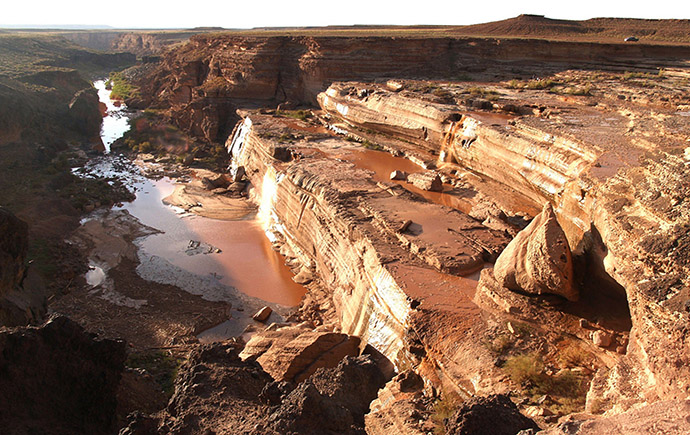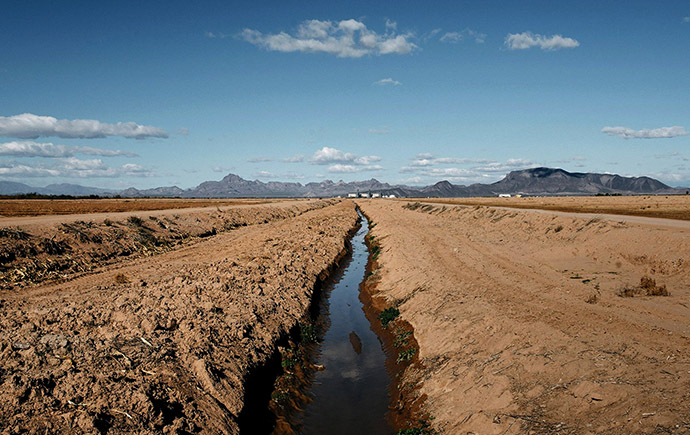Environmental Rights and Adaption to Climate Changeby Dan Zietlow, PH.D., CSTPR Writing Intern We also highlight the research of Steve Vanderheiden, who joined CSTPR as a core faculty member in 2015. Steve is an Associate Professor of Political Science and Environmental Studies at the University of Colorado Boulder, as well as Professorial Fellow at the Centre for Applied Philosophy and Public Ethics (CAPPE) in Australia. He joined the CU Boulder faculty in 2007, and specializes in normative political theory and environmental politics, with a particular focus on global governance and climate change. In addition to numerous published articles and book chapters on topics ranging from Rousseau’s environmental thought to the politics of SUVs, and edited books on political theory approaches to climate change, energy politics, and environmental rights, his Atmospheric Justice: A Political Theory of Climate Change (Oxford, 2008) won the 2009 Harold and Margaret Sprout award from the International Studies Association for the best book on international environmental politics. Steve received his Ph.D. from the University of Wisconsin-Madison. We also highlight the research of Steve Vanderheiden, who joined CSTPR as a core faculty member in 2015. Steve is an Associate Professor of Political Science and Environmental Studies at the University of Colorado Boulder, as well as Professorial Fellow at the Centre for Applied Philosophy and Public Ethics (CAPPE) in Australia. He joined the CU Boulder faculty in 2007, and specializes in normative political theory and environmental politics, with a particular focus on global governance and climate change. In addition to numerous published articles and book chapters on topics ranging from Rousseau’s environmental thought to the politics of SUVs, and edited books on political theory approaches to climate change, energy politics, and environmental rights, his Atmospheric Justice: A Political Theory of Climate Change (Oxford, 2008) won the 2009 Harold and Margaret Sprout award from the International Studies Association for the best book on international environmental politics. Steve received his Ph.D. from the University of Wisconsin-Madison. |
When you think of climate change, you typically think of the physical changes occurring on Earth: the increased average temperatures, changes in rain patterns leading to drought conditions, the melting of sea ice, rising sea levels. You might also think of the ways we’re trying to combat it: becoming more energy efficient and pushing for renewable power, buying locally grown food, carbon dioxide emission limits, efforts to decrease water usage. What you may not necessarily think of, though, are the issues surrounding the global governance of climate change. Enter Steve Vanderheiden, an associate professor at the Center for Science and Technology Policy Research at the University of Colorado. Vanderheiden specializes in normative political theory and environmental politics, with a particular interest in equity issues, democratic issues, and environmental issues as they pertain to climate change. In a society that is actively trying to adapt to a changing climate, an interesting question becomes what environmental rights should now look like, particularly territorial and water rights. |
Let’s take a look at questions about carbon accounting, where countries, companies, or individuals measure greenhouse gas emissions as a metric for their “carbon footprint.” There is a debate between those who think we should calculate carbon footprint based on production of carbon dioxide versus those who think it should be based on consumption. Currently, private firms can get carbon offsets by claiming to make carbon sinks where carbon dioxide is removed from the atmosphere. Vanderheiden ponders how natural carbon sinks, such as forests or oceans, should be accounted. A forest in Canada is presumably owned by Canada, but should the carbon dioxide consumed by this forest count as a credit towards Canada’s carbon footprint? And what happens to this credit if the forest burns or is cut down for logging operations? Territorial rights, Vanderheiden argues, are thus incomplete because most have been developed for resources in and not above ground. This summer, Vanderheiden will collaborate with philosophers, lawyers, and scientists on another issue of environmental rights – this time with water. They will investigate the governance and allocation of surface waters under increasing scarcity. By looking at policies in California, Australia, and the Netherlands, Vanderheiden and his colleagues hope to inform funding bodies and government agencies how water use can be fairly prioritized. In the western U.S., senior water rights are currently over-allocated because they are based on historical amounts of water; however, these assumptions on available water no longer hold as water has become scarcer. So, how do you make a more equitable system? Vanderheiden admits “there are constraints on what we can feasibly do with water,” since for any reasonable water reform to occur, the water rights holders must first see the benefit of the reform. Fortunately, many do and recognize that our existing system of dealing with surface water is not sustainable given expected changes in rain, water flow, and population growth. Possible solutions range from community-driven efforts such as xeriscaping to federal-level efforts such as buying up water rights (as is happening in Australia). Vanderheiden comments that “this is interesting and exciting because I get to look at the case out here [the Colorado River] that I can link to a very similar, overdrawn river in Australia and parse out the similarities and differences in governance and what kind of reform opportunities are available.” For more information visit the CSTPR website. |



